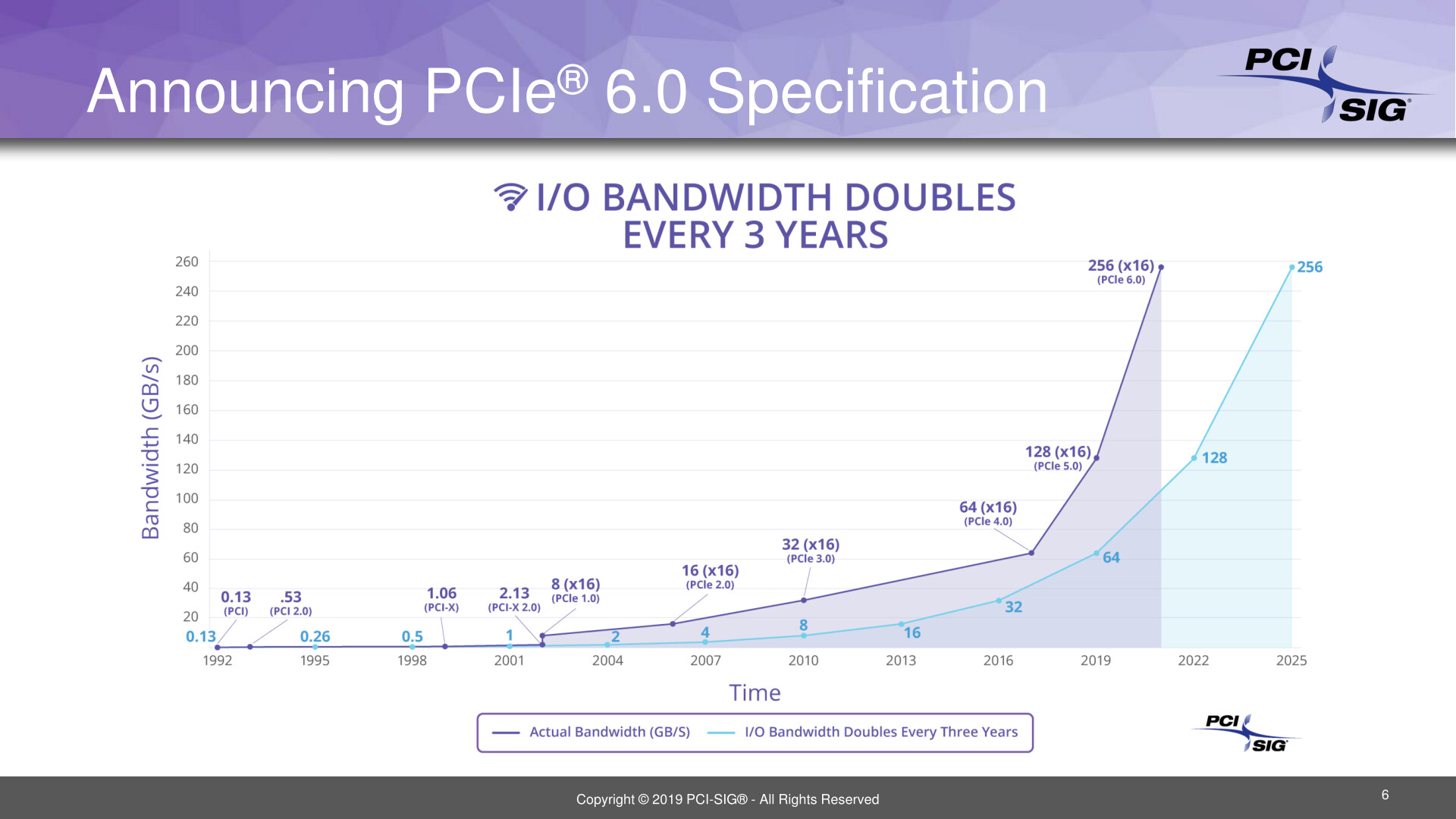The PCI-Express gen 6.0 specification reached an important development milestone, with the publication of its version 0.5 first-draft. This provides important pointers to PCI-SIG members on what features and design changes gen 6.0 hopes to bring, and what its all important number is - bandwidth. PCIe gen 6.0 quadruples per-lane bandwidth over gen 4.0 to 64 GT/s (double that of gen 5.0), resulting in bi-directional bandwidth of 256 GB/s in an x16 configuration. The spec also introduces a new physical layer change, with PAM4 (pulse amplitude modulation) signaling replacing NRZ (non-return to zero), a key ingredient in the generational bandwidth doubling effort. Despite this, PCIe gen 6.0 retains backwards-compatibility with all older generations of PCIe, which could mean the PCIe slot on motherboards may not look any different. PCIe gen 6.0 also introduces FEC (forward error-correction), and has similar per-channel reach as PCIe gen 5.0. Our older article on Intel's proprietary CXL outlines a key feature of PCIe gen 5.0 besides its bandwidth doubling over gen 4.0 - scalability. Although targeting completion in 2021, it could take several more years for the technology to transcend enterprise computing segments and reach the client. PCI-SIG anticipates the need for gen 6.0 kind of bandwidth in the industry by 2025. 
|